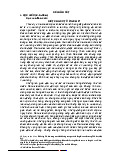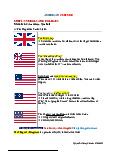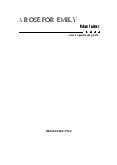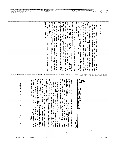



















Preview text:
I started this for Holly I finished it for Maddy
Fairy tales are more than true: not because
they tell us that dragons exist, but because
they tell us that dragons can be beaten. G.K. Chesterton Contents Introduction Chapter 1 Chapter 2 Chapter 3 Chapter 4 Chapter 5 Chapter 6 Chapter 7 Chapter 8 Chapter 9 Chapter 10 Chapter 11 Chapter 12 Chapter 13
Books by Neil Gaiman from Bloomsbury Introduction
We moved into our flat in Littlemead, in the tiny Sussex town of Nutley, in
the south of England, in 1987. Once upon a time it had been a manor house,
built for the physician to the King of England himself, so I was told by the
old man who had once owned the house (before he sold it to a pair of local
builders). It had been a very grand house then, but it was now converted into flats.
Flat number 4, where we lived, was a good place, if a little odd. Above
us, a Greek family. Beneath us, a little old lady, half blind, who would
telephone me whenever my little children moved, and tell me that she was
not certain what was happening upstairs, but she thought that there were
elephants. I was never entirely sure how many flats there were in the house,
nor how many of them were occupied.
We had a hallway running the length of the flat, as big as any room. At
the end of the hall hung a wardrobe door, as a mirror.
When I started to write a book for Holly, my five-year-old daughter, I set
it in the house. It seemed easy. That way I wouldn’t have to explain to her
where anything was. I changed a couple of things, of course, swapped the
position of Holly’s bedroom and the lounge.
Then I took a closed oak-panelled door that opened on to a brick wall,
and a sense of place, from the drawing room in the house I grew up in.
That house was big and old, and it had been split in two just before we
moved there. We had the servants’ quarters and the oak-panelled drawing
room (‘Only for best’) with a door at the end that had once been the
family’s entrance, but that now led nowhere. It opened on to a brick wall.
I took that room and that door, along with the front room of my
grandmother’s house (‘Only for best, not for the family’, still-life oil
paintings of fruit on the walls) and I put them into the book I had started writing.
The book was called Coraline. I had typed the name Caroline, and it
came out wrong. I looked at the word ‘Coraline’ and knew it was
someone’s name. I wanted to know what happened to her.
Holly liked scary stories, with witches and brave little girls in them.
Those were the kinds of stories she told me. So Holly’s story was going to be scary.
I wrote an opening that I later deleted. It went:
This is the story of Coraline, who was small for her age, and found
herself in darkest danger. Before it was all over Coraline had seen what lay
behind mirrors, and had a close call with a bad hand, and had come face to
face with her other mother; she had rescued her true parents from a fate
worse than death and triumphed against overwhelming odds.
This is the story of Coraline, who lost her parents, and found them
again, and (more or less) escaped (more or less) unscathed.
I stopped writing Holly’s book when we moved to America. (I had been
writing it in my own time. It didn’t seem like I had any ‘own time’ any longer.)
Six years later I picked it up and continued from the middle of the
sentence I’d stopped at in August 1992. It was:
‘Hello,’ said Coraline. ‘How did you get in?’ The cat didn’t say
anything. Coraline got out of bed
I started it again because I realised that if I didn’t, my youngest daughter,
Maddy, would be too old for it by the time I was done. I started it for Holly. I finished it for Maddy.
We were living in a gothic old house in the middle of America, with a
turret and a wrap-around porch with steps up to it. It’s a house built over a
hundred years ago by a German immigrant – a cartographer (that’s someone
who makes maps) and artist. His son, Henry, was said to have been the first
man to put an engine on a boat, or on a bicycle, and was described as ‘the
greatest creative figure in the history of the racing car’.
Now I was writing Coraline again, I still had no time, so I would write
fifty words a night in bed, before I fell asleep. I went on a cruise to raise
money for the First Amendment (that’s the one about Freedom of Speech)
in comics, and wrote more of the story sitting out on the deck. I finished it
in a little cabin on a lake in the woods.
Dave McKean, artist and friend, took photographs of Littlemead, which
he then played with to make the house on the back cover of the original American edition.
When Henry Selick made his stop-motion animated film of Coraline, he
invited me to the studio. There were a lot of sets there, each behind a black
curtain. Henry proudly showed me the house that Coraline lived in in the
film. She’d moved from somewhere in England to Oregon now, and the
house she was in was called The Pink Palace.
‘That’s my house,’ I told Henry.
And it was. Henry Selick’s Pink Palace was the house I live in now,
turret and porch and all. None of us are quite sure how that happened. But it
seemed strangely appropriate for a book that was started for one daughter in
one house and finished for another in another house.
The book was published in 2002, and people liked it. It won awards.
More importantly than that, it worked, at least for some people.
I’d wanted to write a story for my daughters that told them something I
wished I’d known when I was a boy: that being brave doesn’t mean you
aren’t scared. Being brave means you are scared, really scared, badly
scared, and you do the right thing anyway.
So now, ten years later, I’ve started running into women who tell me that
Coraline got them through hard times in their lives. That when they were
scared they thought of Coraline, and they did the right thing anyway.
And that, more than anything, makes it all worthwhile.
Chris Riddell has done a new set of illustrations for this tenth
anniversary edition. I looked at the picture he had done for the cover and
was amazed and delighted by the way that he had combined both of the
houses – the one I live in now, the one I lived in then. Neil Gaiman
Coraline, who was standing in the doorway, cast a huge and distorted shadow . . . Chapter 1
Coraline discovered the door a little while after they moved into the house.
It was a very old house – it had an attic under the roof and a cellar under
the ground and an overgrown garden with huge old trees in it.
Coraline’s family didn’t own all of the house, it was too big for that. Instead they owned part of it.
There were other people who lived in the old house.
Miss Spink and Miss Forcible lived in the flat below Coraline’s, on the
ground floor. They were both old and round, and they lived in their flat with
a number of ageing Highland terriers who had names like Hamish and
Andrew and Jock. Once upon a time Miss Spink and Miss Forcible had
been actresses, as Miss Spink told Coraline the first time she met her.
‘You see, Caroline,’ Miss Spink said, getting Coraline’s name wrong,
‘both myself and Miss Forcible were famous actresses, in our time. We trod
the boards, lovey. Oh, don’t let Hamish eat the fruitcake, or he’ll be up all night with his tummy.’
‘It’s Coraline. Not Caroline. Coraline,’ said Coraline.
In the flat above Coraline’s, under the roof, was a crazy old man with a
big moustache. He told Coraline that he was training a mouse circus. He wouldn’t let anyone see it.
‘One day, little Caroline, when they are all ready, everyone in the whole
world will see the wonders of my mouse circus. You ask me why you
cannot see it now. Is that what you asked me?’
‘No,’ said Coraline quietly, ‘I asked you not to call me Caroline. It’s Coraline.’
‘The reason you cannot see the mouse circus,’ said the man upstairs, ‘is
that the mice are not yet ready and rehearsed. Also, they refuse to play the
songs I have written for them. All the songs I have written for the mice to
play go oompah oompah. But the white mice will only play toodle oodle,
like that. I am thinking of trying them on different types of cheese.’
Coraline didn’t think there really was a mouse circus. She thought the
old man was probably making it up.
The day after they moved in, Coraline went exploring.
She explored the garden. It was a big garden: at the very back was an old
tennis court, but no one in the house played tennis and the fence around the
court had holes in it and the net had mostly rotted away; there was an old
rose garden, filled with stunted, flyblown rose bushes; there was a rockery
that was all rocks; there was a fairy ring, made of squidgy brown toadstools
which smelled dreadful if you accidentally trod on them.
There was also a well. On the first day Coraline’s family moved in, Miss
Spink and Miss Forcible made a point of telling Coraline how dangerous
the well was, and they warned her to be sure she kept away from it. So
Coraline set off to explore for it, so that she knew where it was, to keep away from it properly.
She found it on the third day, in an overgrown meadow beside the tennis
court, behind a clump of trees – a low brick circle almost hidden in the high
grass. The well had been covered over by wooden boards, to stop anyone
falling in. There was a small knothole in one of the boards, and Coraline
spent an afternoon dropping pebbles and acorns through the hole, and
waiting, and counting, until she heard the plop as they hit the water, far below.
Coraline also explored for animals. She found a hedgehog, and a
snakeskin (but no snake), and a rock that looked just like a frog, and a toad that looked just like a rock.
There was also a haughty black cat, who would sit on walls and tree
stumps and watch her, but would slip away if ever she went over to try to play with it.
That was how she spent her first two weeks at the house – exploring the garden and the grounds.
Her mother made her come back inside for dinner and for lunch; and
Coraline had to make sure she dressed up warmly before she went out, for it
was a very cold summer that year; but go out she did, exploring, every day
until the day it rained, when Coraline had to stay inside.
‘What should I do?’ asked Coraline.
‘Read a book,’ said her mother. ‘Watch a video. Play with your toys. Go
and pester Miss Spink or Miss Forcible, or the crazy old man upstairs.’
‘No,’ said Coraline. ‘I don’t want to do those things. I want to explore.’
‘I don’t really mind what you do,’ said Coraline’s mother, ‘as long as you don’t make a mess.’
Coraline went over to the window and watched the rain come down. It
wasn’t the kind of rain you could go out in, it was the other kind, the kind
that threw itself down from the sky and splashed where it landed. It was
rain that meant business, and currently its business was turning the garden into a muddy, wet soup.
Coraline had watched all the videos. She was bored with her
toys, and she’d read all her books.
She turned on the television. She went from channel to channel to
channel, but there was nothing on but men in suits talking about the stock
market, and sports programmes. Eventually, she found something to watch:
it was the last half of a natural-history programme about something called
protective coloration. She watched animals, birds and insects which
disguised themselves as leaves or twigs or other animals to escape from
things that could hurt them. She enjoyed it, but it ended too soon, and was
followed by a programme about a cake factory.
It was time to talk to her father.
Coraline’s father was home. Both of her parents worked, doing things on
computers, which meant that they were home a lot of the time. Each of them had their own study.
‘Hello, Coraline,’ he said when she came in, without turning round.
‘Mmph,’ said Coraline. ‘It’s raining.’
‘Yup,’ said her father. ‘It’s bucketing down.’
‘No,’ said Coraline, ‘it’s just raining. Can I go outside?’
‘What does your mother say?’
‘She says, “You’re not going out in weather like that, Coraline Jones”.’ ‘Then, no.’
‘But I want to carry on exploring.’
‘Then explore the flat,’ suggested her father. ‘Look – here’s a piece of
paper and a pen. Count all the doors and windows. List everything blue.
Mount an expedition to discover the hot-water tank. And leave me alone to work.’
‘Can I go into the drawing room?’ The drawing room was where the
Joneses kept the expensive (and uncomfortable) furniture Coraline’s
grandmother had left them when she died. Coraline wasn’t allowed in there.
Nobody went in there. It was only for best.
‘If you don’t make a mess. And you don’t touch anything.’
Coraline considered this carefully, then she took the paper and pen and
went off to explore the inside of the flat.
She discovered the hot-water tank (it was in a cupboard in the kitchen).
She counted everything blue (153). She counted the windows (21). She counted the doors (14).
Of the doors that she found, thirteen opened and closed. The other, the
big, carved, brown wooden door at the far corner of the drawing room, was locked.
She said to her mother, ‘Where does that door go?’ ‘Nowhere, dear.’ ‘It has to go somewhere.’
Her mother shook her head. ‘Look,’ she told Coraline.
She reached up, and took a string of keys from the top of the kitchen
doorframe. She sorted through them carefully and selected the oldest,
biggest, blackest, rustiest key. They went into the drawing room. She
unlocked the door with the key. The door swung open.
Her mother was right. The door didn’t go anywhere. It opened on to a brick wall.
‘When this place was just one house,’ said Coraline’s mother, ‘that door
went somewhere. When they turned the house into flats, they simply
bricked it up. The other side is the empty flat on the other side of the house,
the one that’s still for sale.’
She shut the door and put the string of keys back on top of the kitchen doorframe.
‘You didn’t lock it,’ said Coraline.
Her mother shrugged. ‘Why should I lock it?’ she asked. ‘It doesn’t go anywhere.’
Coraline didn’t say anything.
It was nearly dark now, and the rain was still coming down, pattering
against the windows and blurring the lights of the cars in the street outside.
Coraline’s father stopped working and made them all dinner.
Coraline was disgusted. ‘Daddy,’ she said, ‘you’ve made a recipe again.’
‘It’s leek and potato stew, with a tarragon garnish and melted Gruyère cheese,’ he admitted.
Coraline sighed. Then she went to the freezer and got out some
microwave chips and a microwave mini-pizza.
‘You know I don’t like recipes,’ she told her father, while her dinner
went round and round and the little red numbers on the microwave oven counted down to zero.
‘If you tried it, maybe you’d like it,’ said Coraline’s father, but she shook her head.
That night, Coraline lay awake in her bed. The rain had stopped, and she
was almost asleep when something went t-t-t-t-t-t. She sat up in bed.
Something went kreeee . . . . . . aaaak.
Coraline got out of bed and looked down the hall, but saw nothing
strange. She walked down the hallway. From her parents’ bedroom came a
low snoring – that was her father – and an occasional sleeping mutter – that was her mother.
Coraline wondered if she’d dreamed it, whatever it was. Something moved.
It was little more than a shadow, and it scuttled down the darkened hall
fast, like a little patch of night.
She hoped it wasn’t a spider. Spiders made Coraline intensely uncomfortable.
The black shape went into the drawing room and Coraline followed it in, a little nervously.
The room was dark. The only light came from the hall, and Coraline,
who was standing in the doorway, cast a huge and distorted shadow on to
the drawing-room carpet: she looked like a thin giant woman.
Coraline was just wondering whether or not she ought to turn on the
light when she saw the black shape edge slowly out from beneath the sofa.
It paused, and then dashed silently across the carpet towards the farthest corner of the room.
There was no furniture in that corner of the room. Coraline turned on the light.
There was nothing in the corner. Nothing but the old door that opened on to the brick wall.
She was sure that her mother had shut the door, but now it was ever so
slightly open. Just a crack. Coraline went over to it and looked in. There
was nothing there – just a wall, built of red bricks.
Coraline closed the old wooden door, turned out the light, and went back to bed.
She dreamed of black shapes that slid from place to place, avoiding the
light, until they were all gathered together under the moon. Little black
shapes with little red eyes and sharp yellow teeth. They started to sing:
We are small but we are many We are many, we are small We were here before you rose
We will be here when you fall.
Their voices were high and whispery and slightly whiny. They made Coraline feel uncomfortable.
Then Coraline dreamed a few commercials, and after that she dreamed of nothing at all.



